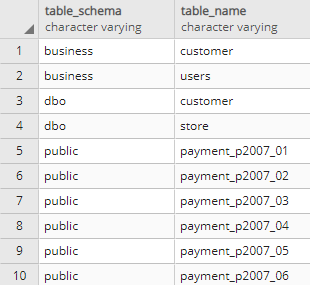
Website_url TEXT NULL, comment TEXT NOT NULL ) Post_id INTEGER NOT NULL PRIMARY KEY AUTOINCREMENT , To create it, enter the statement: CREATE TABLE comments ( To store the comments we must define a table.

It is what happened when we entered the single command sqlite3 for the first time. Note: If no filename follows the command, sqlite3 automatically creates a temporary database. This will create a database file comment_section.db in the current working directory. Then, issue the command: sqlite3 comment_section.db If you are still in the sqlite3 program, quit it by entering. Most other database engines including MySQL use Static Typing. You can see the documentation for different Datatypes and Storage Classes provided in SQLite3. We can define the datatypes of the columns (attributes) as follows: Attribute

We must also define a column that numbers the comments. Of the four of these, only website URL is optional. To post a comment, the user must enter the following details: Almost every website today has a comment section. We will learn to work with sqlite3 with our Comment Section database. They can be stored on various storage devices and can be transferred across different computers.
#Sqlitestudio multiple primary keys portable
SQLite databases are cross-platform portable files. Since the tutorial is a beginner level introduction, we will cover only the above mentioned commands. Note: SQLite understands many other standard commands, a list of which can be read here. Standard Commands can be classified into three groups:ĭata Definition Language: It provides the storage structure and methods to access data from the database system.ĭata Manipulation Language: It enables users to manipulate (add/modify/delete) data.ĭata Query Language: It enables users to retrieve required data from the database. Standard SQL commands are issued to operate on a database. Meta commands are issued to examine a database. The table can contain only one primary keyĪ primary key cannot be a NULL value in the databases, but in the case of SQLite, it can be assigned a NULL value, because of the “long-standing coding oversight”.Ī table should have only one primary key, but multiple columns can be defined in a single primary key, when multiple columns are being used as a single primary key, then it is called a composite primary key.Let us go through the standard commands in sqlite3.The primary key should be referred to as the particular foreign key of another table.The data inserted in the rows of the column of the Primary key should be unique.The column of the primary key cannot be defined with the NULL value.

Primary keys are very essential when creating a database that has a variety of tables, and to create relationships among the different databases, the primary key is used. The table can be created without using the primary key, but if the table is using the primary key, then only one primary key can be assigned to the table. There are many constraints, some of them are:Ī primary key is the unique column of the table, which ensures the entries inserted in the column should be unique and is also used to refer to the foreign key of other tables. What are the constraints in SQLiteĬonstraints are the principles, according to which data of the same data type is inserted into the table, it organizes the structure of the column and also ensures the reliability of the data which is stored in the table.
#Sqlitestudio multiple primary keys how to
So what are constraints and how do they work in SQLite? This write-up is a comprehensive guide about constraints and on how to use the PRIMARY key constraint in SQLite. SQLite is a database management system, which is used to manage the data of the relational database just like MySQL, it also contains a lot of constraints such as UNIQUE, PRIMARY KEY, and FOREIGN KEY like other databases.


 0 kommentar(er)
0 kommentar(er)
